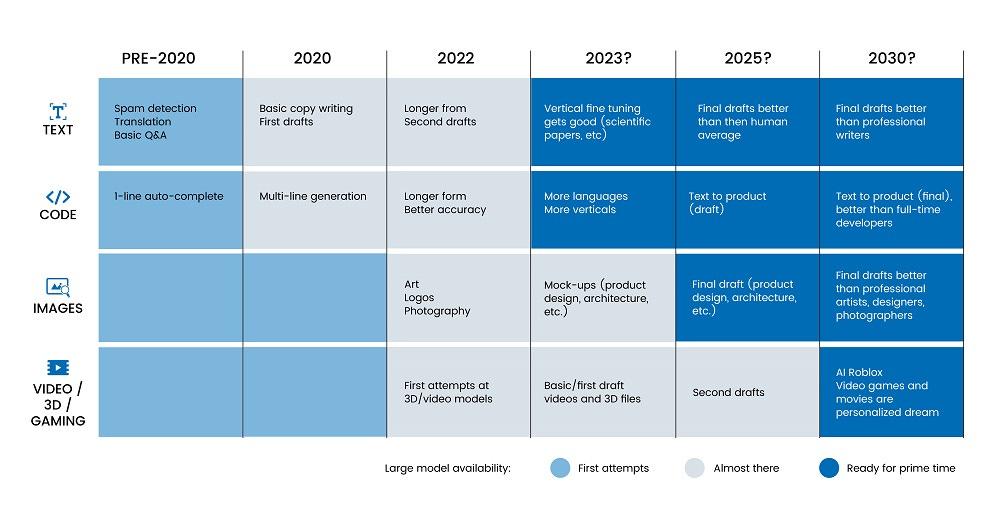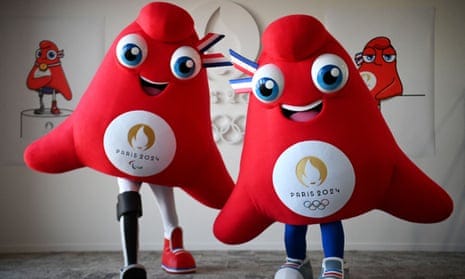Hello reader,
And welcome to hi, tech. 140.
It’s around that time of year when I start hearing voices.
I’ll be pouring my cornflakes and I’ll hear
…2023 is the year of blockchain…
I’m walking through the park and wind suggests
…Drone deliveries are happening for real this time…
Even the birds seem to tweet
…Supply chain automation will come of age… coo..
Yes, it marks my seasonal transition into what I’m calling Joan of Clark. I have visions from the tech gods that it would literally be a sin not to share with you.
Did I need to make that image? I believe with all of my might that I did.
See, I’ve been talking to publications about 2023 this week and you can expect more soothsaying in these pages soon. I am possessed of a gift given only to about 50,000 self-appointed forecasters in the tech industry.
If your company is in need of a 2023 trends presentation, give me a call. At least I know it’s a bit of a nonsense, so I do try hard to find some substance.
One such trend is, of course, generative AI.
Generative AI takes existing content (text, audio, images) and turns it into new content.
I asked GPT-3 for some 2023 tech predictions and, to be fair, it’s as good as most analysts out there:
As we move towards a new year, I am particularly intrigued by the upcoming launch of GPT-4 (probably in January/February 2023).

The pace of change in this field has been incredible over the past 12 months. Every time we notice a huge flaw (it can’t do faces!) an update comes along (it can do faces, but they still look weird).
Little is known about GPT-4, yet we can hazard a guess at a few improvements based on GPT-3’s shortcomings:
Multimodal content: GPT-3 was a huge step forward for language generation AI and I’d expect GPT-4 to move into other media. As in, it will create images with captions, later expanding into more audio and video content.
Bigger and less dense: All the rumours suggest GPT-4 will be more “sparse” than GPT-3. This means not all neurons are active in performing tasks; instead, different parts of the network can work on different tasks simultaneously. This is somewhat inevitable - it is expected to have a lot more parameters than GPT-3.
Cheaper: Apparently, OpenAI has found a way to train more data using less compute. That will be passed on to us, the customers.
We are currently in that transitional phase, when technology has advanced but we haven’t figured out what to do with it yet. We had barely scratched the surface of GPT-3 and now it is going multimodal on us. It’s like when Bob Dylan went electric. We’re not ready!
Naturally, this leads people to ask the same old question: Will a robot take my job?
I’m being only slightly mean and 100% accurate when I say that if you keep asking that kind of question, the robots probably will take your job. They are capable of that level of critical reasoning.
Nonetheless, the confused excitement about generative AI is widespread. The fact that OpenAI’s models are open-source means that the possiblities are endless. That is, if we start asking better questions.
Generative AI has been labelled “VC’s next gold rush” and Sequoia reckons the industry will progress as follows (apologies, they used a really small font size - perhaps to avoid scrutiny):
We do need a soupçon of cynicism here, too. Anything that is called a “gold rush” should set your alarm bells to "ring mode” straight away.
This is the same Sequoia we razzed last week for backing FTX. They have backed all number of crypto Ponzi schemes recently. Plus, we are trained to give some credibility to predictions laid out in a table like the one above, however facile they may be.
The question is not whether the technology will improve (it will), but rather what knock-on effects it will have for our productive capabilities.
If anyone can auto-generate images or videos of 7/10 quality with just a short prompt, how will we navigate to find the 9/10 content?
Take a look at a Google Images search for something banal like ‘digital transformation’:
These aren’t the best images in the world, although for digital transformation they might just be. They are instead the best ones our technology can serve up for us at a moment’s notice. Bing is already working with DALL-E to incorporate AI images into search and that seems sensible.
Will we really need Google Search to trawl a load of B2B blogs for content if GPT-4 can give us better answers, faster and tailored to our exact needs?
Which skills will we come to devalue or appreciate more?
The ability to navigate a sea of AI content and apply some aesthetic sensibility will hopefully increase in value. Not because I am in possession of this skill (you saw the Joan of Clark image, right?), but that’s just the kind of world I’d rather live in.
Equally, the ability to train open-source models for specific use cases will be highly valuable. Consider an algorithm that specialises in auto-created marketing content in line with each brand’s “identity”. This can combine with other technologies, such as virtual influencers, to create personalised content on a massive scale.
How can we embed the technology into existing processes to extend our abilities?
It has never interested me whether we can replicate human intelligence in a robot. We just welcomed the 8-billionth person to earth this week and no-one celebrated the arrival of more human-level intelligence.
On the other hand, I would love generative AI to act as an assistant that suggests ideas within the platforms I already use. At the moment, we go to Jasper or Copy.ai or Stable Diffusion to create content that we export and use elsewhere. We should not expect that division to hold.
Instead, companies will embed the technology to help us get more done, more effectively. Consider, for example, an AI trained for your tone of voice that can auto-suggest five video topics for your YouTube channel. You pick your favourite and the AI creates, then edits the video for you.
The concept of the meeting room “brainstorm” will, mercifully, be altered forever too. We would not hand over creative control to the AI, but creativity itself is ultimately about seeing a previously unseen link between two things. Like me and Joan of Arc, for example.
AI can create the combinations, then our own imagination and judgement come into play.
That said, there are legal questions about generative AI that will make more headlines as the technology progresses. The notion of ownership is about more than just creative pride. It is also about liability, and copyright laws differ by country. The US requires human authorship, while the UK allows for AI to help “arrange” the work.
Needless to say, I am signed up to trial GPT-4 and I’ll report back promptly. With any luck, it will know how to write sarcastic newsletters.
️⚽️ Clark’s Classic World Cup Cook-Off 2022 ⚽️
As most of you will know, I’m quite the chef. During the last World Cup, I made quite a few dishes and even more waves with my international cuisine.
This time, I’m taking it about 50 steps further with my World Cup Cook-Off. The spreadsheet looks like this at the moment:
Did I need all the mini flags?
Well I don’t know - does a peacock need all them feathers?
The idea is that every evening, I cook a meal inspired by at least one of the teams playing that day. For the first game, I’ve got a special Ecuadorian meal lined up. Monday is Wales day, then I’m doing a Franco-Australian mashup on Tuesday.
I’ll post some images - maybe even the odd video - on social media every day.
It’s all for a good cause, too. (My social follower numbers)
YOU can follow along on my Instagram feed here.
Or here:
Oh sure, critics would say I’m doing this because I haven’t got a huge amount of work on at the moment. On that note: seriously, let me know if there are any decent jobs going.
Samsung Ads Partners with Experian
“Samsung Ads’ proprietary ACR (automatic content recognition) data helps advertisers understand viewership behaviours on opted-in Samsung Smart TVs in Europe. Complementing these existing datasets, the new Experian partnership will unlock further targeting capabilities for advertisers by providing demographic data, geographical location, attitudinal insights and vertical insights.”
I do find this sort of development intriguing, especially as advertisers look for new ways to target their audience. If advertisers can then create content that more closely matches what the viewers are watching, they will surely get better results. Once more, you’d have to think that specialised, generative AI could fill this gap in future.
🤨 A final point.
You know how much I like mascots for major sporting events - if they are done well.
We only get so many shots at this.
Imagine the horror at hi, tech. Towers this week as Paris unveiled these googly-eyed ghouls for the next Olympics:
What’s that? We have a World Cup starting this week?
Oh well I’m sure that means we’ll get a decent masc..
Oh honestly, forget it.
It’s not so difficult and it is big business, if you listen to people who know mascots.
For any designers out there, seek inspiration below:
Until next time! See you at the cook-off 👨🍳












